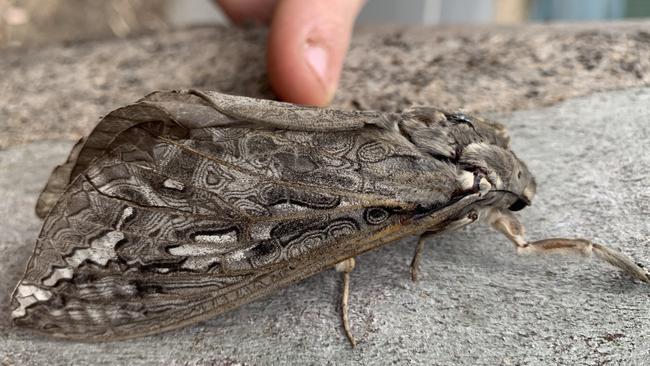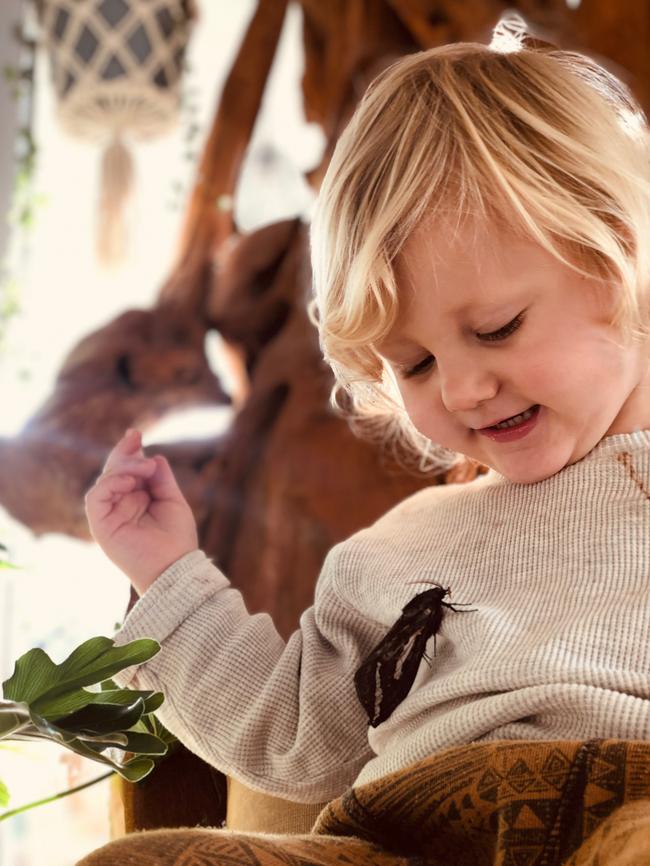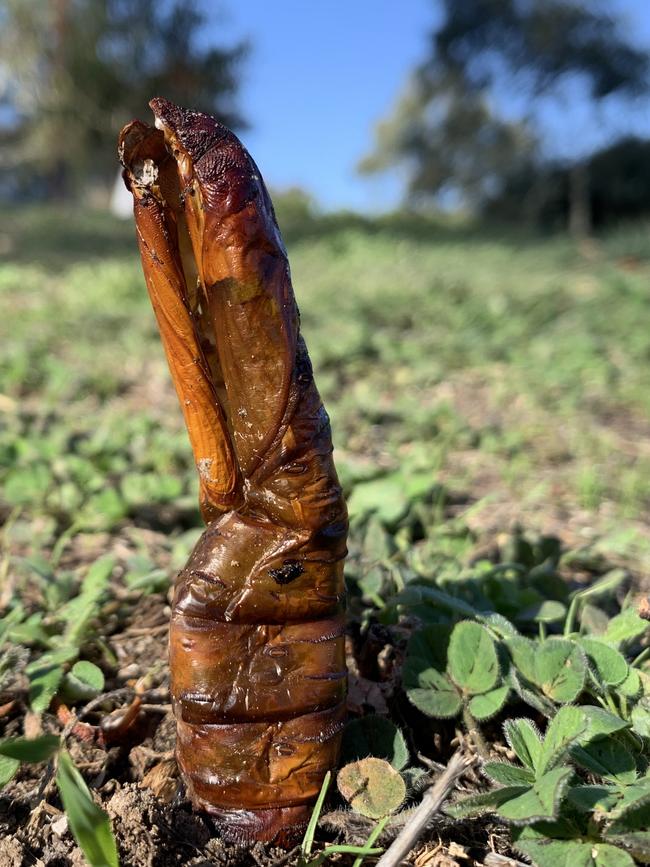Rain moths emerge across SA with hundreds of sightings reported
Is that a bird, a bat or a giant butterfly? No, it’s a rain moth. There are more about this year after all the rain – and they make great pets.
technology/environment
Don't miss out on the headlines from technology/environment. Followed categories will be added to My News.
HEAVY autumn rainfall has triggered the emergence of rain moths the size of small bats, delighting small children and naturalists.
Reports of sightings by the hundreds flooded the Natural Resources Adelaide and Mount Lofty Ranges Facebook page in recent weeks.
Butterfly Conservation SA chairman Gerry Butler says the information from more than 1000 comments along with many regional sightings reported on the Bugs n Slugs page will help researchers.
“We will look at all of those comments, at least half have location data, it’s a citizen science project really,” he said.
“We can get more of an idea about the moth’s range, distribution and conditions they like.”

SA Museum honorary researcher Michael Moore says the rain is important and this year we’ve had a couple of wet weeks in a row, bringing more moths to the surface.
“There seems to be more moths around yes, certainly more than last year,” he said.
“It’s been an excellent season so far, with a little bit more to go, not a lot.”
He’s hoping to discover new species when he goes out collecting on dark, wet nights.
Barry Wright, a teacher at Xavier College in Gawler Belt, brought a moth home from school.
“The rain moths appear on school grounds annually for a week or so,” he said.
“I brought the moth home for my son Logan, who is an avid fan of all things to do with bugs and named this particular beauty ‘Chuck’.”

Natural Resources Adelaide and Mt Lofty Ranges regional manager Kim Krebs said the team was “surprised and delighted” when their Facebook post turned out to be so popular.
“So far 1000 people have commented and shared photos and locations of the moths, and the post itself has had a reach of over 138,000,” she said.
“How can we explain the popularity of posts like this about the natural world? Perhaps because we are spending more time at home right now, we are observing what is going on in our own backyards and neighbourhoods and so we are discovering that nature lives all around us. We are taking the time to pause and to notice things we normally might overlook.”
Butterfly Conservation SA is hosting a Zoom meeting: “Rain moths and other moths”, on Wednesday, May 13; 7pm – 8.30pm. Register in advance at butterflyconservationsa.net.au
FACT FILE:
The Rain Moth
It’s a familiar sight across backyards, school grounds and parks around Adelaide after heavy rain, the empty pupal cases of Rain moths sticking up out of the ground. The abundant autumn rains have triggered the emergence of Rain moths from underground, where they live for many years slowly eating plant roots.

Adelaide and regional South Australia, has three species of rain moth: Abantiades argentata and Abantiades atripalpus (both brown) and a white/grey species, Abantiades marcidus.
The caterpillars of the Rain Moth live in tunnels in the ground where they feed on the roots of Australian native species such as Eucalypts and Casuarinas. Fishermen like the caterpillars because they are great bait for fishing.
Rain moths are large; they can be the size of a small insectivorous bat and, due to their size, they are an attractive meal for owls. They have grey-brown wings with flashes of white across each forewing. Males have a wingspan of 100-120 mm, and females have a larger wingspan, 150-170 mm. The females produce up to 40,000 small eggs that are scattered while flying in the first day of their short life.
Rain moths are found across southern Australia in woodland areas bordering creeks and gullies, especially where Eucalypts are found. Rain moths larvae eat the roots of trees and the adults do not feed and their flight months are April to June.
There are over 1000 species of moths found in and around Adelaide.
SOURCE: Natural Resources Adelaide and Mt Lofty Ranges

